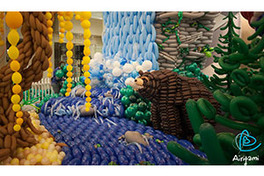
Balloon Breakdown
Help compost 40,000 latex balloons
In a specific area
- Ongoing
More Information
We are essentially redoing a study that the balloon industry performed many years go. Our interest in doing this experiment is to acquire more data on latex in the environment. Our hope is that in presenting the project in this way, we can teach children about composting using materials they already enjoy.
Have you ever wondered what happens to a balloon after it pops? At first a broken balloon might not seem to be as interesting as one that’s twisted into a funny shape, but then we wondered, what happens to a balloon after it pops?
Rubber balloons are made from latex. Latex comes from trees. Wood and paper come from trees. Do balloons break down in the environment like wood and paper do?
We want to find out what happens to balloons as they biodegrade, or decay and become absorbed by the environment. We want to learn how long it takes for them to break down. And we’re curious if there are ways to make them break down faster.
While some experiments are quick, this is a long-term project. It will be quick to set up, and simple to keep track, but this experiment won’t be finished overnight, or even in a few weeks. We’re going to compost balloons and determine the length of time needed, under different conditions, for the balloons to break down fully.
Ticket Required: No
Minimum Age: 13
Languages: English
